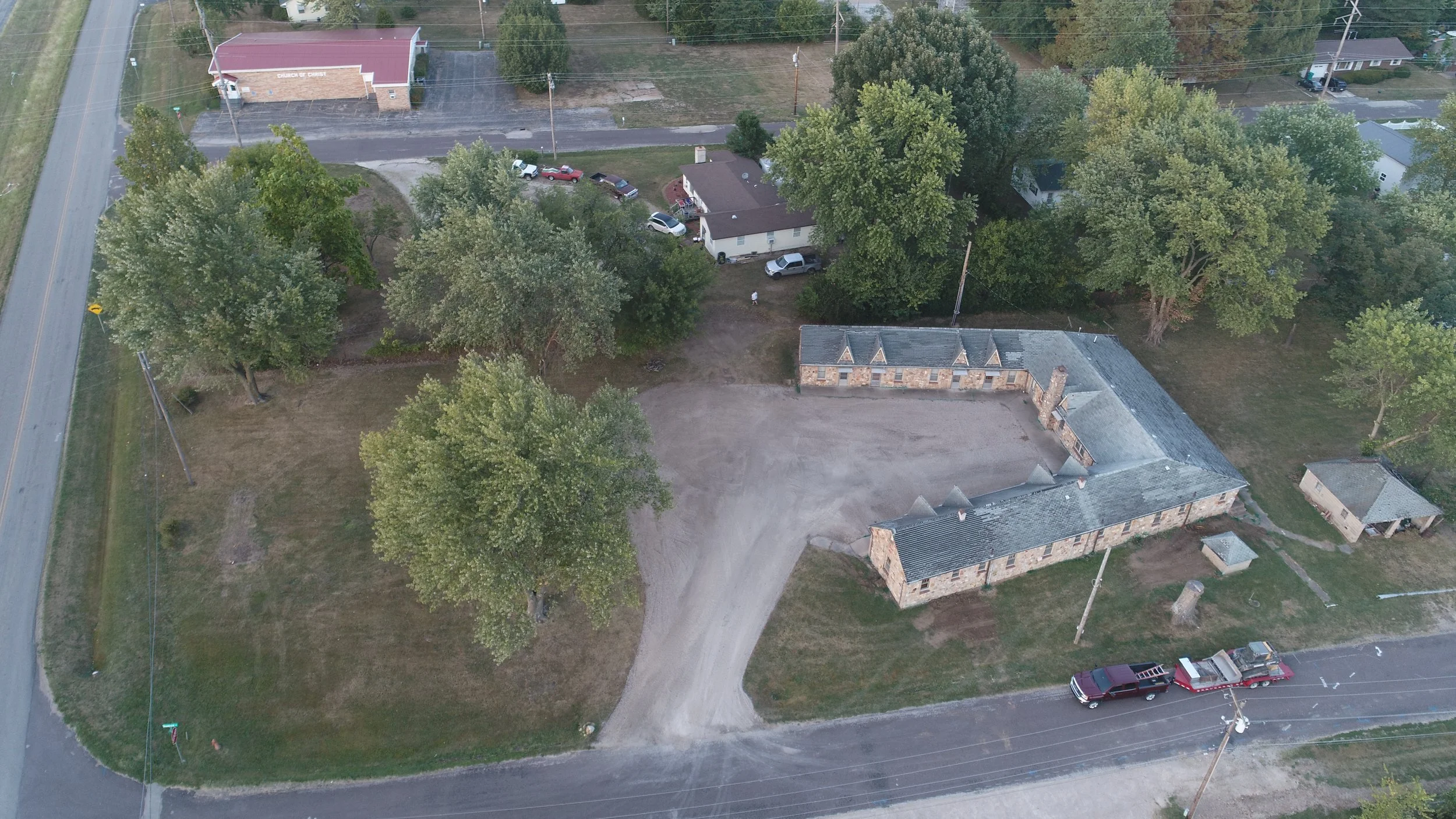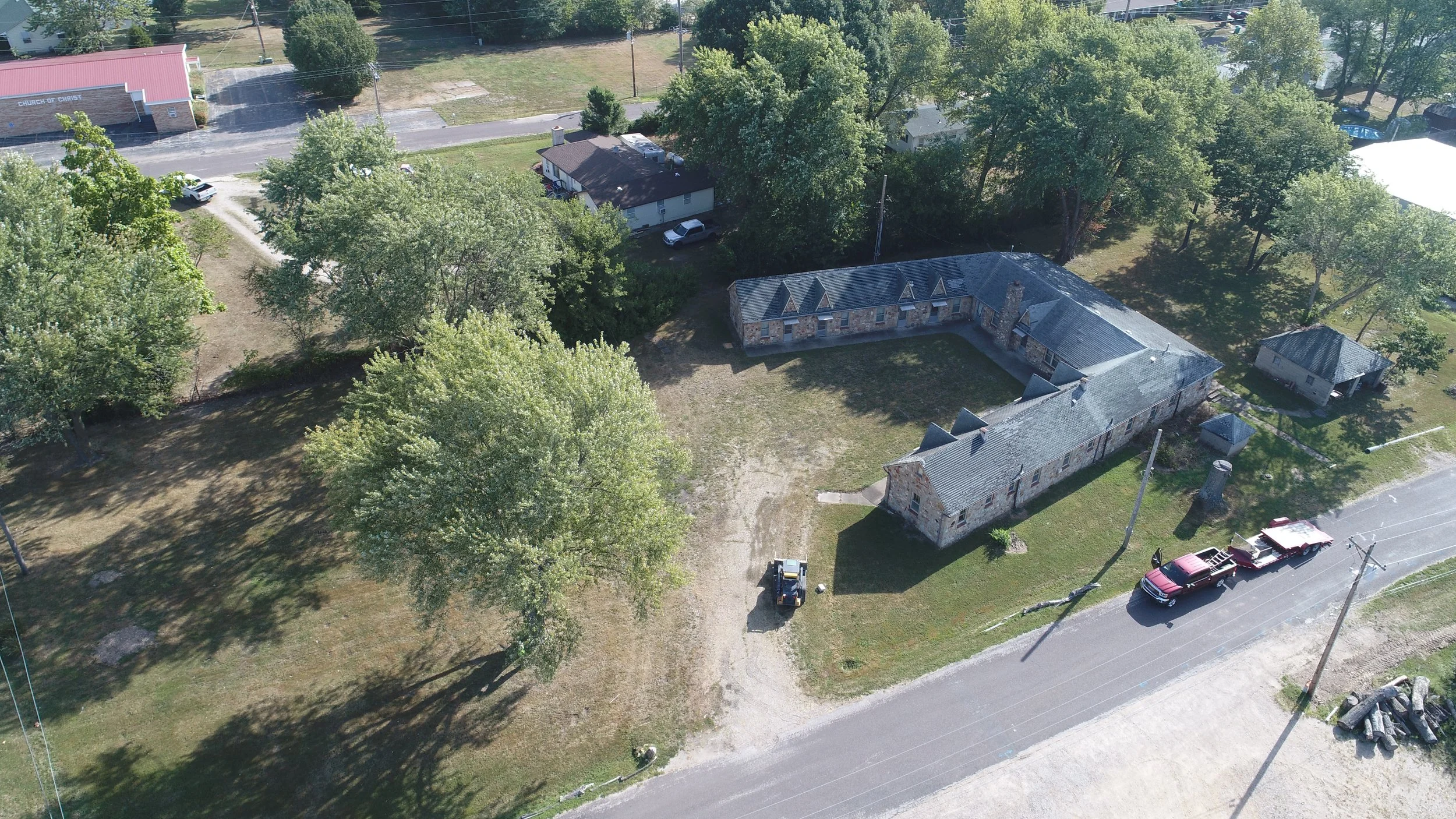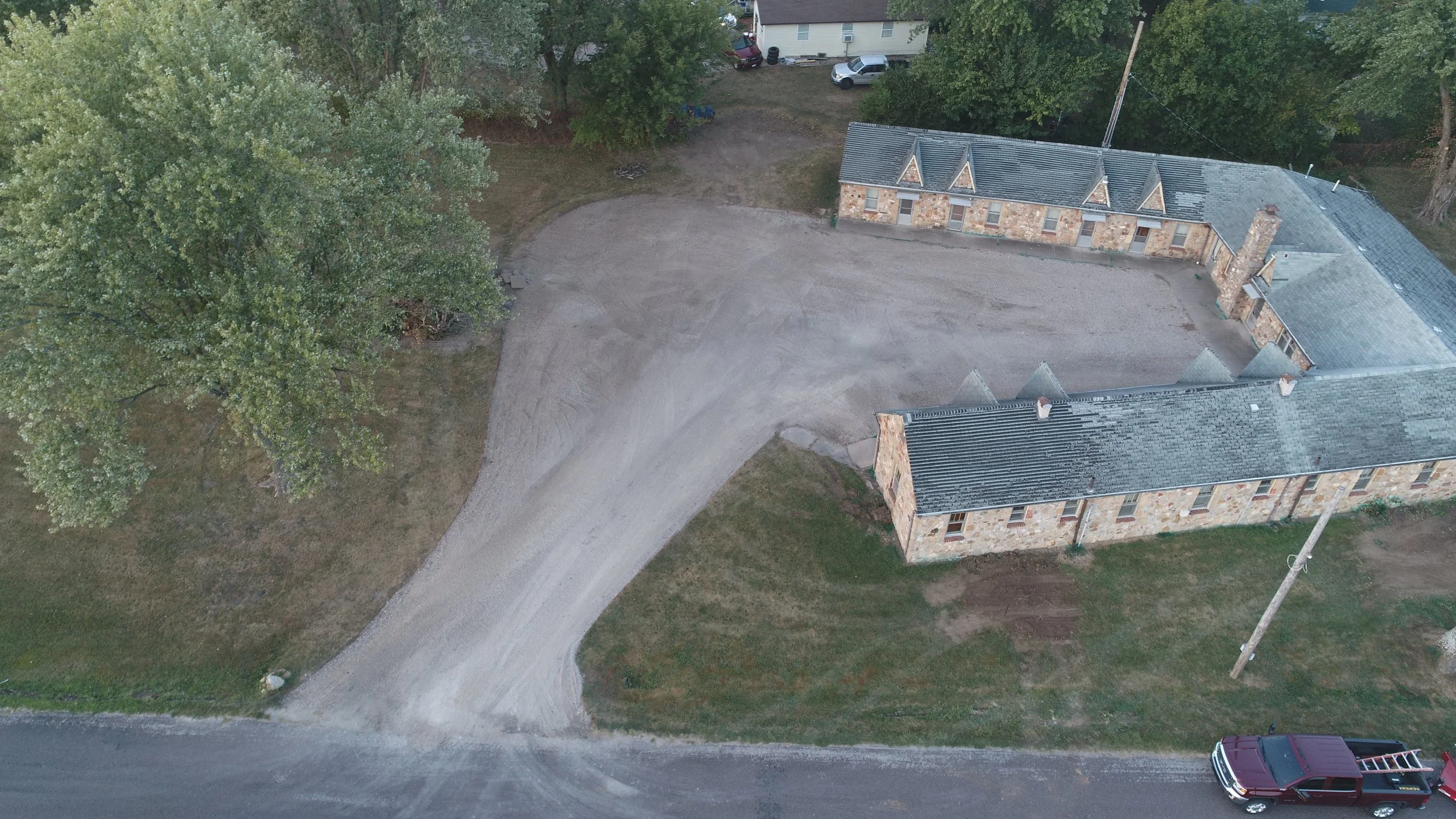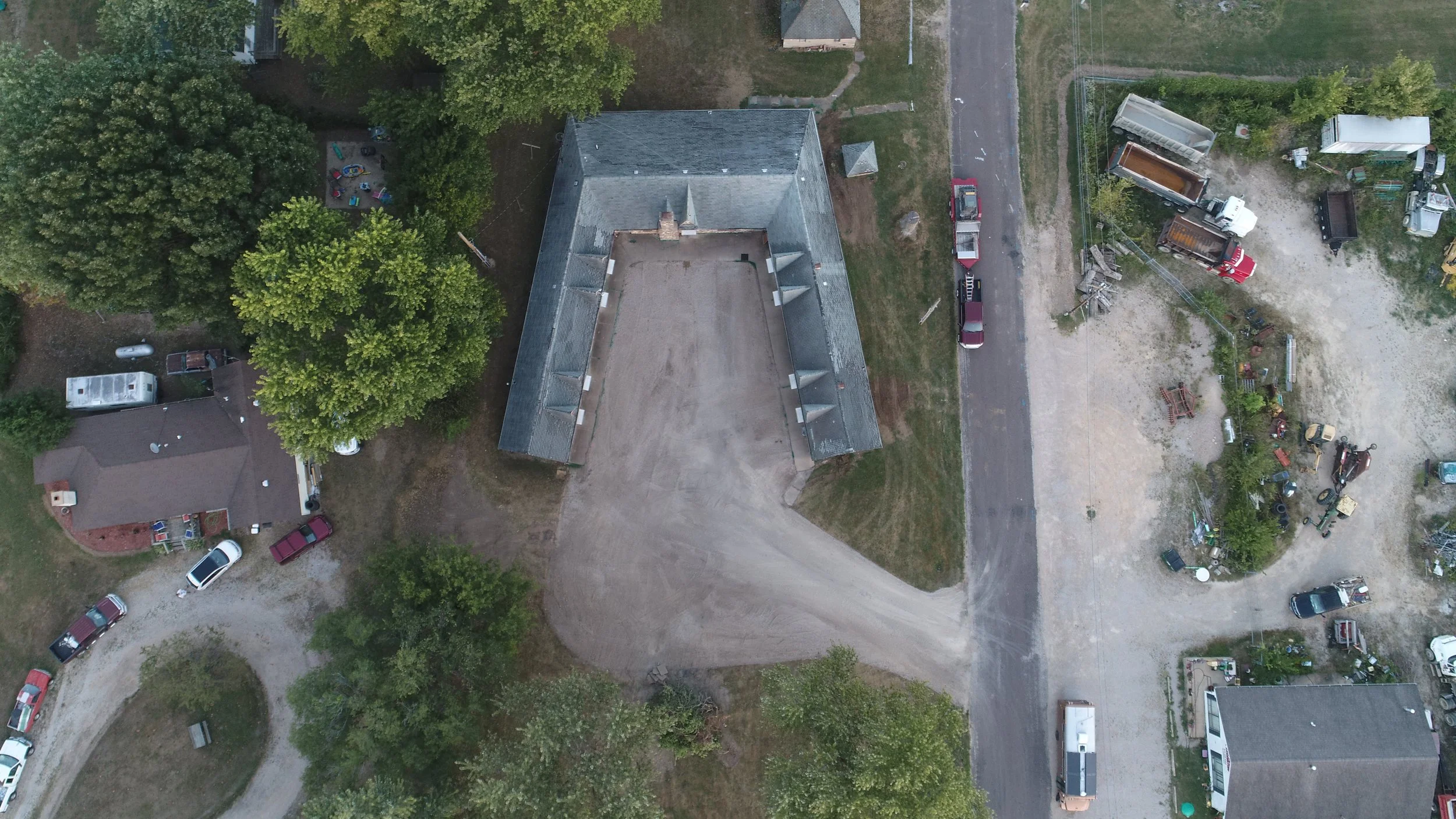
Rediscovering The Parking Lot
It was there the entire time. We just had to go digging for it.
Rediscovering the parking lot…
The parking lot vanished over time, succumbing to the advances of mother nature and human abandonment. Where did it go? Was it pavement or gravel? How were we to understand exactly how it should be laid out?
Inspiration from above.
Because the Shamrock was primarily under one owner in nearly its entire existence, so many artifacts were kept and preserved. This rare aerial photo from the early 1950s is one of those artifacts. It was discovered by a volunteer. Roamin Rich studied the photo to see exactly how the parking lot for the motor court was designed. Because of this photo, he was easily able to find exact footprint of the original parking lot layout.
For more revealing information about this wonderful aerial image, click below:
Mother Nature Reclaims…
Slowly, green grass and other foliage had overrun the old gravel court yard. No rock was visible which made unsuspecting visitors wonder if there was ever a parking lot. Although the foliage offered up a surreal appearance, once vehicles would start to use the area on a consistent basis, it would kill off the grass quickly. Then there was the problem of not knowing where was safe to drive. We couldn’t allow vehicles to get stuck in the yard.
Rich set out to reestablish the parking lot. He studied the old historic aerial image and quickly found the rock shown in the image was still there; under a dense layer of soil and overgrowth.

It didn’t take long to figure out what happened to the old parking lot.
Unraveling the Mystery…
It became apparent very quickly once we dug down past the overgrowth. The parking lot was still intact, insulated by greenery and soil.
In all, we removed approximately 9 dump truck loads of soil and grassy growth. Not one ounce of rock had to be brought in. All the rock you see here today, has been here for decades. We just uncovered it.
What exactly happened??? Roamin Rich being an expert in pavement offers up a theory. Over the decades rock was simply dumped in a pile then spread by hand, or was “tailgated,” a technique used by dump truck drivers to spread their load as they tip their bed and drive. Both methods are haphazard and offer little to no precision. When we finally exposed all of the gravel we found that the lot was severely higher in elevation near the Northeast section. This would have been a convenient spot for trucks to just dump their rock. We made an inquiry with Billy Weiland and he did offer up some recollection of having to move rock by hand. Given the obvious fact that no machine grooming was performed, the parking lot was out of shape and graded improperly. “It was humped up in all the wrong places,” said Rich. Eventually this led to water impediments. The lack of drainage caused issues with the building to take on moisture which led to rotting of the main structures subfloor. Additionally, grass began to grown because sediment was being captively held on the parking lot. As time went on the issue gradually became worse; until the point where the lot started to look like a lush lawn.
Fortunately we had the visual reference of that old aerial photo. With careful probing behind the controls of a skid steer, we found the extent of the parking lot. Just beyond the parking lot is a drainage swale that also served as a small berm for some sort of bushes, like boxwoods, or hydrangeas. This hedge was shown in both post card views. Eventually we will reestablish the hedge of bushes to replicate the same visuals that existing during the 1950’s.
The Future:
During 2024, after much of the major heavy construction has concluded, we will pave the parking lot. Roamin Rich has put a lot of thought into this. We don’t want to disrupt the visual appearances or detract from the historic nature of the building. Gravel offers an old feel with a rustic look. However, gravel is dirty and dusty. It’s uncomfortable in the summer time. People don’t readily enjoy driving clean vehicles onto gravel surface. We will find a balance. Rich recounts a time during his childhood when he worked with his father paving asphalt driveways spreading meramec gravel chips onto the freshly paved surface of a driveway just before compacting it with a roller. “I don’t remember exactly how it turned out, but my father said he never got any complaints from that job,” explained Rich. it’s a technique we will experiment with to see if its a good solution. If so, it will give people a dust free, hard surface to park and walk on, while no detracting from the beautiful stone work of the buildings.















